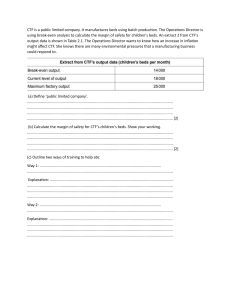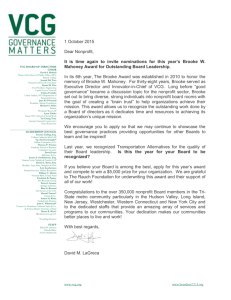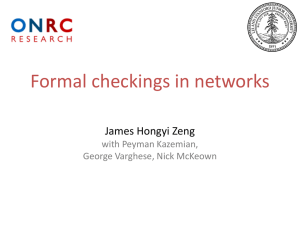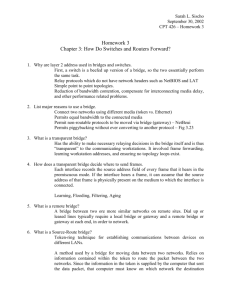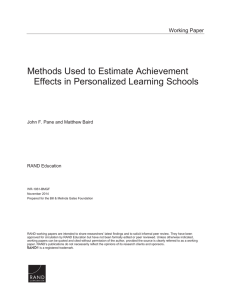Exercise Sheet 5
advertisement
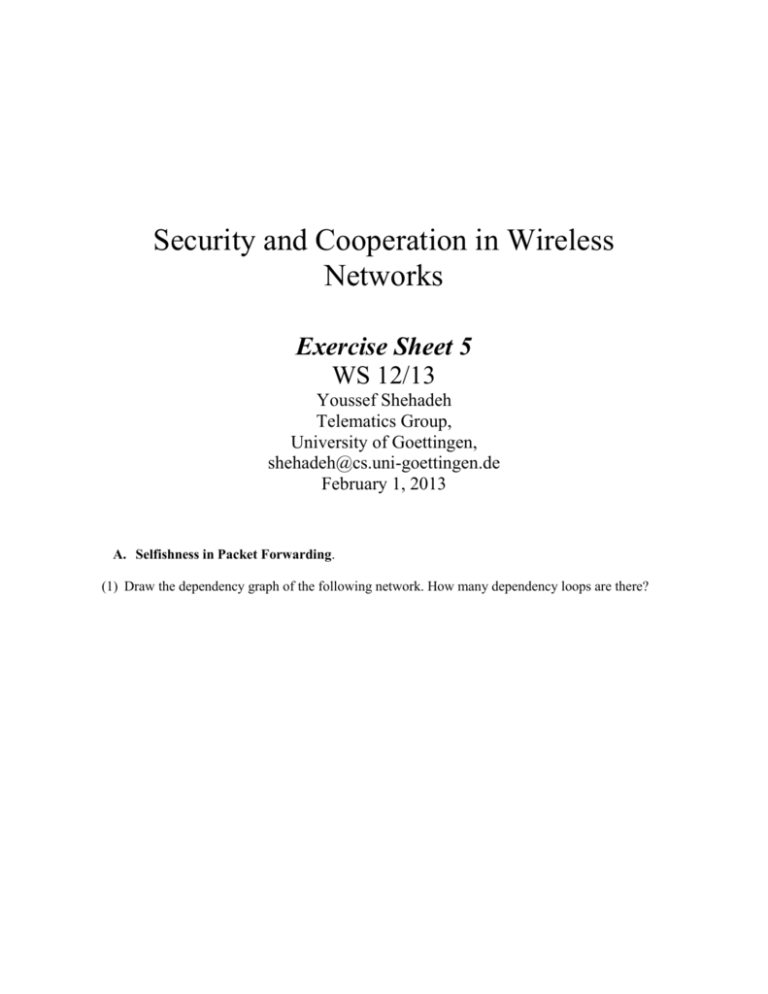
Security and Cooperation in Wireless Networks Exercise Sheet 5 WS 12/13 Youssef Shehadeh Telematics Group, University of Goettingen, shehadeh@cs.uni-goettingen.de February 1, 2013 A. Selfishness in Packet Forwarding. (1) Draw the dependency graph of the following network. How many dependency loops are there? B. Secure protocols for Behavior Enforcement (1) If the system admits a Forwarding-Dominant protocol, then it converges to a unique solution. Explain why this property makes Forwarding-Dominant protocols more desirable than protocols that achieve Nash Equilibrium. (2) Consider the VCG payment scheme with the following network: a. Assume now that the packet forwarding cost over a link is computed via a protocol between the nodes at both ends of the link (i.e. mutual computation). Consider the following scenario: v2 cheats in the link cost establishment protocol and increases the cost of v2 v3 to 5 while the real cost is 2. How does this affect v2's and v3's rewards? Does the cheating influences the probability of belonging to the LCP? b. What happens if v3 reacts by decreasing the cost of v2 v3 to 3? Conclude on the truthfulness of VCG with such a link cost establishment protocol. c. Explain how the secure link cost protocol using test signals makes VCG truthful. C. Wireless operators in shared spectrum (1) Consider again the forwarding game discussed in the slides (with 4 strategies: CC,CD,DC,DD): We want to model this game through game theory. Assume that each node gets a benefit b (b>10) when its packet is received at the base station. The utility of this node is then equal to the difference between the benefit and the transmission cost (a ~2).. Write the normal form of this game and identify the Nash equilibria. (2) Assume that in the above Figure, the distance between the base station to the left and the sensor next to it is 2 instead of 1 (the other distances are unchanged). Write the costs in a Table. What can you say about cooperation in this scenario? (3) For two operators in a shared spectrum, would you expect the normalized payoff difference to be higher or lower for a lower path loss a. Explain why. (4) Operators in a shared spectrum: In the case of 10 data users, we observe that the Pareto optimal points form a straight line. Why? What kind of game is this?
